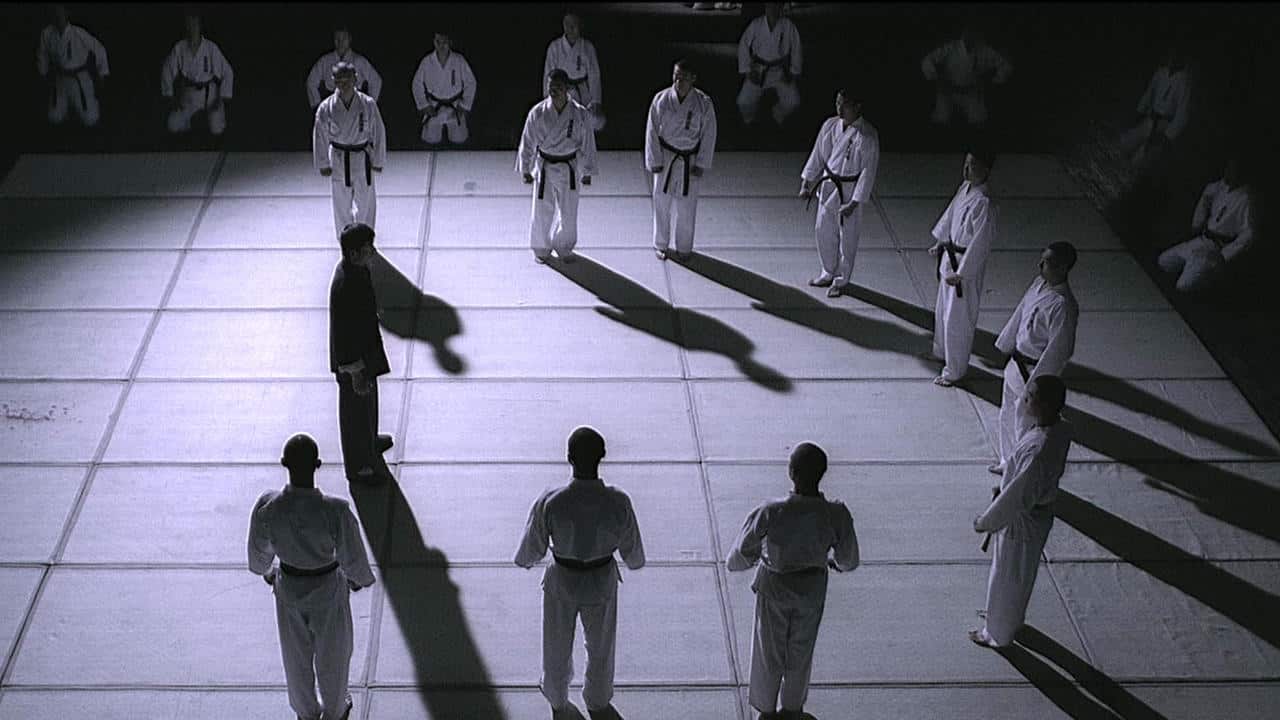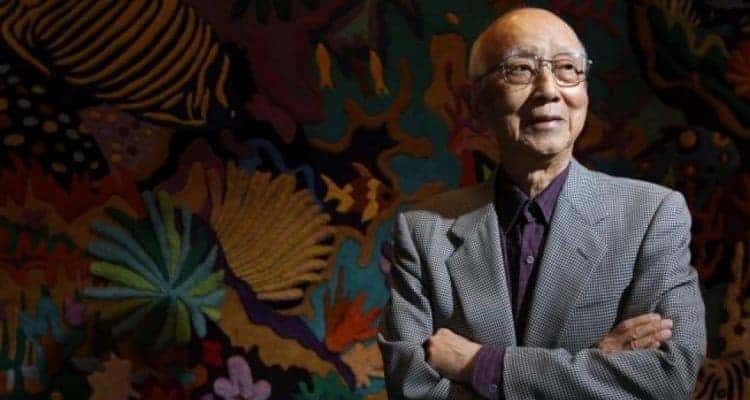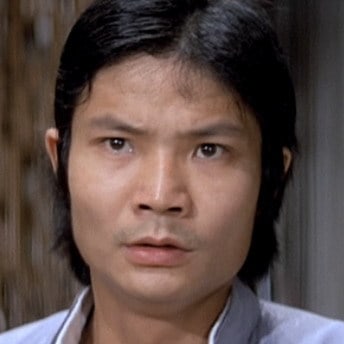Since early age, Kristína Aschenbrennerová (1980) had planned to become a film actress like Greta Garbo. Fortunately, quite soon she realized her qualities lie elsewhere and graduated in film theory and history. She works at Slovak Film Institute/National Cinematography Centre as Slovak cinema promotion officer and event coordinator. Since 2009, she programmes, until recently with Adrián Žiška, Eastern Promises, a section of IFF Art Film Fest Košice dedicated to mainstream and genre films from East and Southeast Asia. On not that regular basis, she gets to select (Asian) or recommend shorts for ISFF Brno 16, and in 2017 she proudly recommended a few fabulous films to Slovak Queer Film Festival. Occasionally writes and tries to keep a WP blog under an alias Anomalilly. Talks a lot.
We speak with her about Eastern Promises and Art Film Fest, Asian cinema, the Slovak audience, and many more topics.
Eastern Promises is not a festival, but a section of IFF Art Film Fest Kosice. Tell us a bit about this collaboration, how it works.
Well, as a programmer, the idea is, I make a list of films and forward it to the programming/acquisition team that is supposed to check the availability and terms of screening. It is set before, how many films for each section, as well as the deadlines. Usually, I am suppose to finish (selected and confirmed) before FEFF Udine, but for the last two years I managed to get a prolongation, so I still can add a film. We have, pretty much, freedom of choice, unless the film is expensive. As you can imagine, with Asian mainstream, I hear that a lot. Then, the decision is moved to the Artistic Director. Yet, if we say the film is crucial, we might have it, but it might cost us another film, so instead of, let`s say 7 films, the section will screen 6. But with 2000€/one screening discounted to 1700€/one screening, I was told to come up with a different title.
Why did you decide to deal with Asian cinema, and not any other region? What the purpose of Eastern Promises?
I was already teenager, when I fell for the stunning visuals of the Asian films. I found the pictures intriguing, being different from the European way of leading the look of the viewer, the emptiness full of calm or tension, but not boredom. The pathos that only rarely would not be laughable with European and US cinema (Bay, early Rodriguez and Tarantino can make it work, actually.) It`s been both, film club screened Ozu and Mizoguchi, and regular cinemas Wong Kar-wai and Zhang Yimou, that became, in a way, an alternative, if not a mild opposition to the Hollywood everything. . That is where I met young Tony Leung Chiu-wai and Andy Lau. Add Han Suk-kyu in “Shiri” and Lee Byung-hun in “A Bittersweet Life”.
Actually, at the time, the image of Asian cinema was this of a meditative, philosophical, beautiful and cruel not only as emotional suffering, but also physically, as Kim Ki-duk barged in. And as the time passed, it became more and more palpable. Because these films became the only face of the multifaceted cinemas. And I rediscovered John Woo and the beauty of Hong Kong “Target” and “City” films. It took us some years to find the platform. Actually, we have been on and off with Peter Nagel for some 4 years, before we really got the green light.
We have aimed to actually rediscover the popular cinema in countries of East and South-East Asia for Slovakia. To show the beauty of crime films, action cinema, comedies, romantic comedies, weird films, nation pride films. I hope these films will find some stable audience in Kosice as well.

How do Slovaks receive Asian films? Are there any genres, countries that seem to be more popular?
We have had quite a gap in proper Asian films distribution. Moreover, I am pretty sure that “Chasing the Dragon” would be screened at art house cinema. Because Asian cinema in general is not considered mainstream, despite Ang Lee and Parch Chan-wook making it to multiplexes. Yet, most of the Asian films, if watched, are seen either outside the country, or pretty much from the online sources.
These days, the focus seems to move towards the middle-east. For the far east, I see the perpetual and nostalgic love for the films screened here in the late 1990s, and recently, a distribution company focused on the selections from Berlinale, Festival de Cannes and Venice IFF, brought in Hirokazu Kore-eda, and and quite surprisingly for Slovak distribution, Hou Hsiao-hsien`s “Assassin” and Lav Diaz`s “Woman Who Left”. It is actually not that easy to say what films work, but generally, those on (non-action) drama side, not too mainstream, not too art house. I call them Sunday afternoon films. And yes, it can be a compliment, and not.
Art Film Fest changed its base and in 2016 moved from Trencíanske Teplice and Trencin to Kosice. How did you find this change, and what were the benefits of it?
What you need to know is that the original location was less than one hour car ride from the country capital. So people arrived just for the weekend, or just to catch up on a film, just in-and-out. On the other hand, the two towns were 20 minute drive, with Trencianske Teplice only having one proper cinema, and Trencin offering 4 screens, yet in not the friendliest layout, and that meant that the festival guests either had to have a car or accommodate their wishes to the shuttle schedule.
We don`t have this anymore in Kosice, which is much better equipped. Yes, there are still things to improve (like sound system and chairs, or A/C at some of the cinemas, servers etc.), but the city offers 6 screening rooms and an open air cinema. Except for the open air cinema, it takes a 20 minute walk to get from the most distanced cinema to that on the other end, and you walk through a city center. And you can enter at least three of the screens with your drink. But we lost a chunk of audience that just will not come to Kosice, as the trip is 5-times longer.

Can you analyze the procedure of the film selection?
To make the first list, I basically keep in touch with the sales, do my best to stay updated on their portfolio, follow the programming of other film festivals, read the reviews. And of course, I have my liebling directors, actors/actresses. I watch those films to see if I like them, and what to do with them. I usually have some films pre-selected, those are those that due to time or non-availability or other reason could not be screened in the just passed edition. So, already now I have some 40 films that might work in 2018. Then I look at them as a group and see if I can see a pattern, a theme, something that might link the films and perhaps be shown in different genres. What I always try to achieve is not to be too dark in tone, too heavy on emotion. Yet, that is a risk of a hell of a strong film. You watch it and you don't want to see any other for the rest of the day.
Eastern Promises has been up for 8 years in 2017. Are there any episodes in its history you single out? Good and bad.
Like the three times I did a little quiz show before each “When Marnie Was There” screening, because of DKDM not working. Or learning after doing the introduction that my most favourite films were not ingested correctly or accidentally deleted – I literally sat down and cried and my guest director bought me a beer and calmed me down. We are still in touch. Luckily, it wasn`t his film.
Funny thing is, that the nice ones have to do with Sion Sono a lot: When we screened “Love Exposure”, somehow it was programmed to end after the last shuttle bus from Trencin to Trencianske Teplice, so some people left during the break. There was a married couple in their late 40s and they approached Adrian and I, saying “they loved the film and were sorry, but the shuttle…”. Good thing, I was with my car, they watched the film till the end. Actually, the cinema manager had to hurry the audience and us out, as after the film ended a spontaneous debate started. Or when I kind of forced a friend, director of „Short Film About Wong Kar-wai“ to go for “Love & Peace” instead of a trip, and he walked out of cinema whistling the song. Or people humming “Let's Fly”.
But of course, the best for ever and ever happened due to screening this documentary on Indonesian action cinema, we had the director invited. If you haven't done that yet, big mistake. “Garuda Power”, is the title.
What is your opinion of Asian cinema at the moment? Are there any individual filmmakers or countries that stand out?
I partially blame myself, as I kind of kept the South-East Asian cinemas marginalized. So I am kind of (re)discovering interesting filmmakers. Only two or three years ago I set my eye on Erik Matti. Funnily enough, the same time I saw “Chanthaly” (2012) by Mattie Do. It is a vast region, so many cultures to learn, and so many films I will probably never hear of. Plus, it is not rare that talking about one country`s cinema is like talking about multiple country regions of Europe, if not of European cinema.
Yet, I feel fatigue with some country-genre marriages. It could have been expected, in a way, as the newer ones try to build on the success of a few films without giving the scheme much of a thought and end up making copies of copies. There is a lot going on, on political and social and family life in the countries that influence the face of the cinema. Like, due to the president Park`s regime, we have a nice batch of strong thrillers to horrors from South Korea. Young directors from Hong Kong, who are not (yet) the money bringers (interesting enough for China to have them work for Chinese films), redefine the image of Hong Kong. Seems like, the only thing stable is a broken, mainly motherless, family in Japanese cinema.

How do you imagine the future of Eastern Promises, and what are your plans for the future?
Well, the future is very near and if I don't double the admission in 2018, it might be over. Thus the plan is quite simple, put together a selection that I will be happy and proud to present, keep with my idea of geographical opening of the section, and keep my 2016 promise to introduce at least one animation. And in the meantime, think how to keep Far East in Slovak festival circuit.
2019 update: Celerating 10th edition with Funan by Denis Do to represent animated film, there has been increase by some 20 people per screening in admissions. One sad news, I have broken the silent but kind of obvious tradition of one Eddie Peng a year.
















